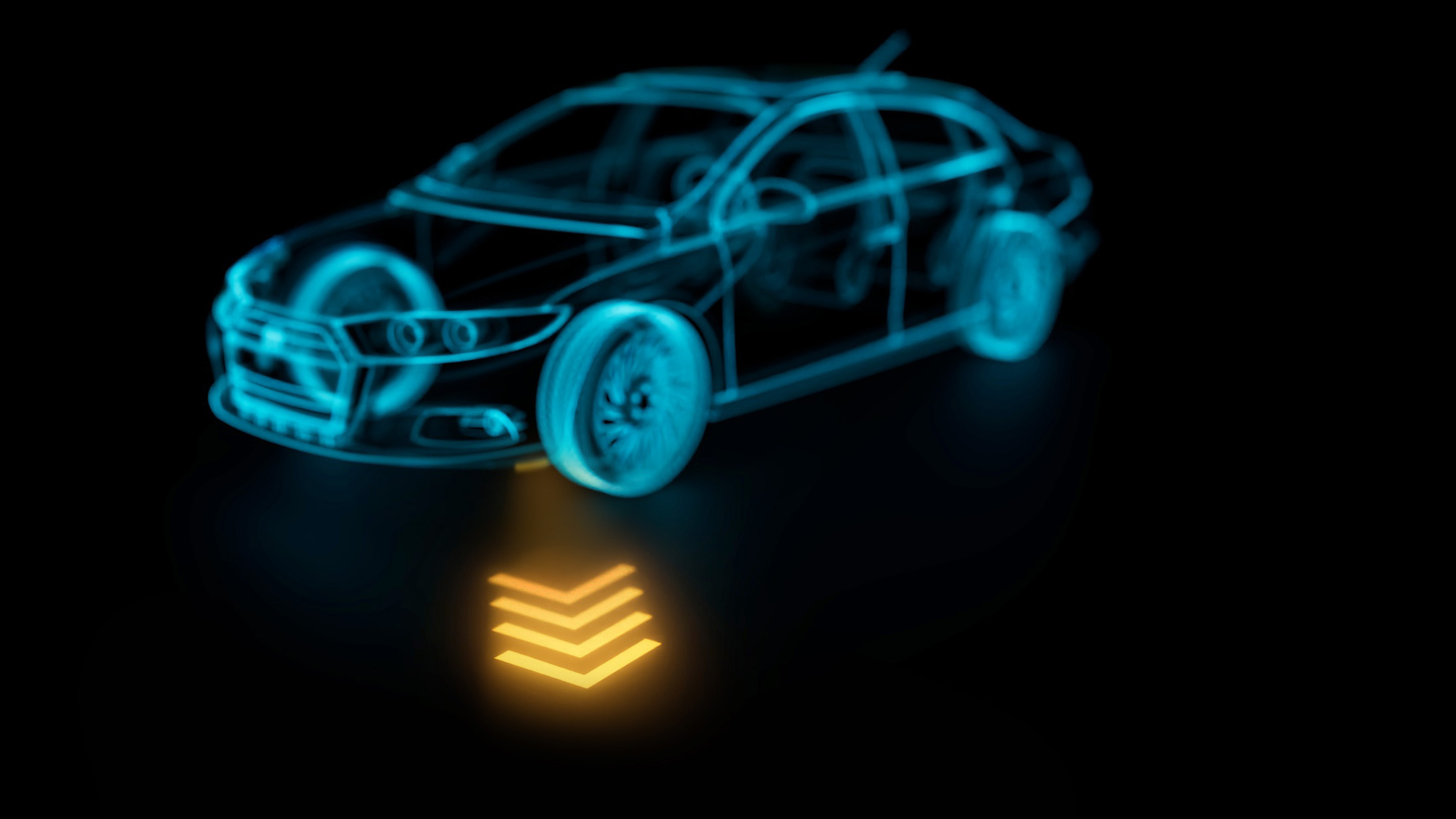OPTATEC: Fraunhofer IOF researchers develop compact turn signal for improved road safety
Dynamic projected turn signal for increased road safety
In recent years, micro-optical projectors have become well established for automotive applications. These projectors enable cars to communicate with their surroundings. Researchers at Fraunhofer Institute for Applied Optics and Precision Engineering IOF have now developed a dynamic indicator light that guarantees maximum visibility in a compact form, even under daylight conditions. The blinker will be presented for the first time at OPTATEC 2024 in Frankfurt (Main) from May 14 to 16.
Blind spots, small turn signals or poor visibility - there are many reasons why risky situations might occur between participants in road traffic, for example when a cyclist overlooks the turn signal of a car pulling out.
Researchers at Fraunhofer IOF have now developed a projected turn signal that achieves an illuminance of over seven thousand lux with a size of just 35 x 35 x 55 millimeters. "This high level of illumination, together with the dynamic chase-light effect of the chevrons, makes the indicators visible even in daylight," explains Rohan Kundu, scientist in the Department of Optical and Mechanical System Design.
The design approach developed at Fraunhofer IOF overcomes key challenges in applications with micro-optical projectors: Buried, absorptive mask layers in conventional projection systems lead to transmission losses, a complex and costly manufacturing process, and a reduced service life of the projectors. The researchers at Fraunhofer IOF have completely removed these masks in the development of the projected blinker and shifted the pattern generation and beam shaping to microlens arrays (MLA).
Design enables highest possible visibility and dynamic light sequences
The two-sided MLA consists of an arrangement of chevron-shaped microlenses (lenslets) on the light input side and smaller square lenslets on the output side. By illuminating the MLA at different angles of incidence, light paths are directed between specific combinations of input and output lenslets. This intentional channel crosstalk enables the projection of a dynamic sequence of chevrons on the road. The design approach allows a single projector system to produce multiple chevrons at different positions, simplifying installation and reducing costs and space requirements.
The two-sided micro-optical arrays are produced by grayscale lithography (mastering). They are then replicated as polymer-on-glass tandem arrays. The combination of polymer and glass enables precise control of the optical properties, as the polymer material can be specifically applied and molded onto the glass surface.
Simplified manufacturing processes and traffic safety
According to the researchers at Fraunhofer IOF, the tandem arrays can also be manufactured using less expensive technologies. "The use of very cost-effective processes such as injection molding or hot embossing enables the production of larger and on optionally curved substrates with only minimal loss of optical quality," explains Rohan Kundu.
In recent years, micro-optical projectors have become established for many street projection applications. They can be highly miniaturized and are suitable for so-called Car2X communication. Projected patterns enable the car to communicate with its surroundings, be it other cars, pedestrians, or cyclists. The dynamic turn signal developed can therefore contribute to increased road safety. The projection systems continue to represent a key technology for intelligent transportation systems in the future, such as autonomously driving cars.
Presentation at OPTATEC 2024
The turn signal will be presented for the first time at OPTATEC 2024 in Frankfurt (Main). The projection system will be on display at the international trade fair for optical technologies, components, and systems from May 14 to 16 in Frankfurt (Main). Fraunhofer IOF will be exhibiting at booth 610 in hall 3.1.
In October of this year, the system will also be presented at the International Suppliers Fair and Europe's leading trade fair for the automotive supplier industry, the IZB Wolfsburg from October 22 to 24.
Download area | Press photos and press release as PDF
Further information
- Department Optical and Mechanical System Design (iof.fraunhofer.de)


